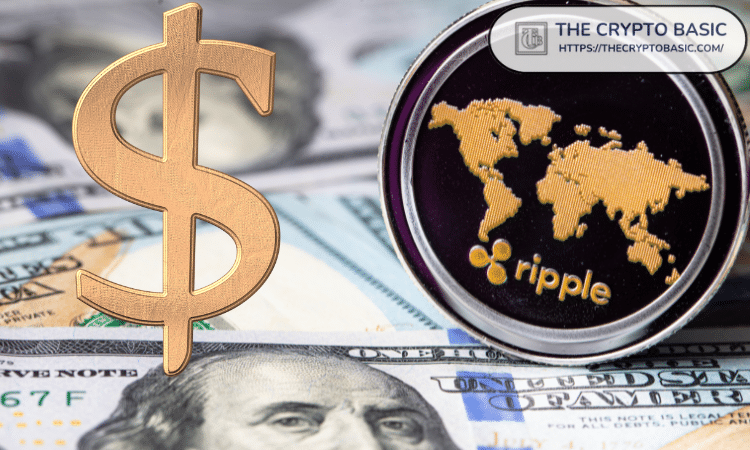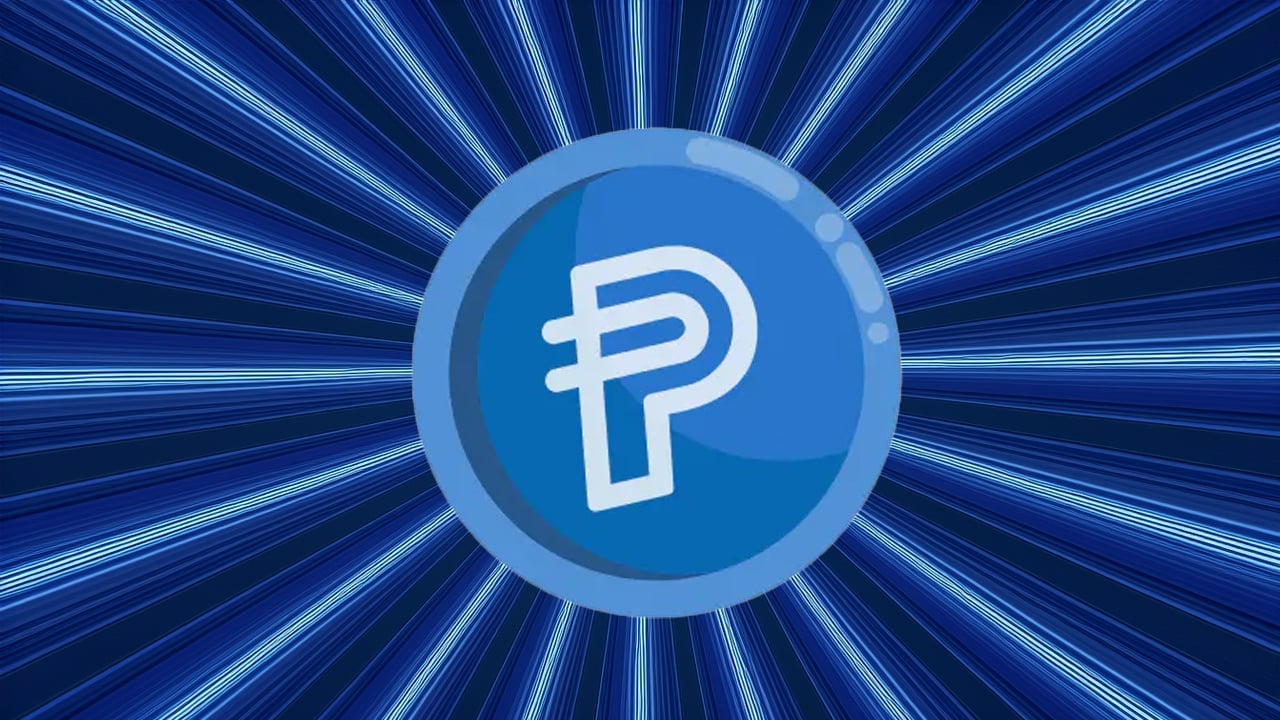 web3.0
web3.0 Paxos Expands Stablecoin Adoption in the Payments Industry, Strikes Partnership with Stripe
Paxos Expands Stablecoin Adoption in the Payments Industry, Strikes Partnership with StripePaxos, the blockchain firm behind Pax Dollar (USDP), is expanding stablecoin adoption in the payments industry with the launch of its new enterprise-grade stablecoin payments platform.

Pax Dollar (USDP) issuer Paxos is expanding stablecoin adoption in the payments industry with the launch of its new enterprise-grade stablecoin payments platform.
The platform is designed for payment service providers (PSPs) and fintech companies, enabling them to integrate stablecoin payments into their systems for faster and lower-cost global transactions.
Paxos has announced that payment processing giant Stripe will be the first PSP to integrate Paxos’ infrastructure. Stripe's “Pay with Crypto” product, which allows businesses to accept stablecoin payments, will feature Paxos' technology, enabling these payments to settle in fiat currencies like the U.S. dollar.
"We're always looking for methods to make it easier and less expensive for businesses to accept payments from their customers worldwide. We're thrilled to partner with Paxos to enable stablecoin payments for our users with our Pay with Crypto product," said John Egan, Head of Crypto at Stripe.
The new Paxos platform offers an API infrastructure that allows payments to be made in either stablecoins or fiat. The platform supports conversions between the U.S. dollar and three stablecoins: Pax Dollar (USDP), PayPal USD (PYUSD), and Circle's USD Coin (USDC). It will initially be available in the U.S., with plans to expand to additional currencies and regions over time.
Customers must set up a wallet with Paxos to use the platform, and merchants or PSPs can choose whether to receive stablecoins directly or convert them to fiat. The platform also supports on-chain transfers via the Solana and Ethereum networks for PYUSD and USDP, respectively, while USDC is supported via Ethereum, Solana, and Polygon.
Merchants will also be able to issue refunds in the same stablecoin that was used for the initial payment.
Stripe currently accepts pay-ins from over 70 countries, and the addition of stablecoin payments will allow businesses to accept payments from anywhere in the world.
“This is truly enterprise-grade infrastructure for payments, where Paxos brings our regulatory-first approach to the payment capabilities needed across onboarding, custody, and money movement,” a Paxos representative stated. Paxos also intends to add more assets and blockchain networks to the platform based on customer demand.
The stablecoin market has experienced rapid growth, reaching a total market value of over $170 billion in September 2024. Major players in the space include Tether (USDT), Circle (USDC), and PayPal (PYUSD).
The above is the detailed content of Paxos Expands Stablecoin Adoption in the Payments Industry, Strikes Partnership with Stripe. For more information, please follow other related articles on the PHP Chinese website!
 Tether (USDT) Issuer Plans to Launch New Stablecoin Pegged to the United Arab Emirates Dirham (AED)Aug 22, 2024 am 12:18 AM
Tether (USDT) Issuer Plans to Launch New Stablecoin Pegged to the United Arab Emirates Dirham (AED)Aug 22, 2024 am 12:18 AMTether CEO Paolo Ardoino cited UAE's status as a global economic hub as a key factor behind the launch.
 Ripple USD (RLUSD) Now in Private Beta Testing on XRP Ledger and Ethereum MainnetAug 10, 2024 pm 03:05 PM
Ripple USD (RLUSD) Now in Private Beta Testing on XRP Ledger and Ethereum MainnetAug 10, 2024 pm 03:05 PMRipple has officially started the private beta testing of its proprietary USD stablecoin project Ripple USD (RLUSD) on the Ethereum mainnet and the XRP Ledger (XRPL).
 Paypal's PYUSD Nears $1B MilestoneAug 17, 2024 am 06:10 AM
Paypal's PYUSD Nears $1B MilestoneAug 17, 2024 am 06:10 AMThe stablecoin asset issued by Paypal is now the sixth largest stablecoin asset today after growing significantly over the past ten days.
 Ripple Advances Its Stablecoin RLUSDAug 11, 2024 am 03:34 AM
Ripple Advances Its Stablecoin RLUSDAug 11, 2024 am 03:34 AMCompeting with the giants Tether and Circle, which offer the two most capitalized stablecoins on the market: this is the objective that Brad Garlinghouse
 Ripple USD (RLUSD) Represents a Pivotal Moment for Digital CurrenciesAug 10, 2024 pm 06:27 PM
Ripple USD (RLUSD) Represents a Pivotal Moment for Digital CurrenciesAug 10, 2024 pm 06:27 PMBy pegging RLUSD to the US dollar, Ripple aims to offer a stable alternative in the often-volatile world of cryptocurrencies.
 Ripple’s Stablecoin Enters Beta Phase On XRP Ledger And EthereumAug 10, 2024 pm 01:12 PM
Ripple’s Stablecoin Enters Beta Phase On XRP Ledger And EthereumAug 10, 2024 pm 01:12 PMIn a major milestone for Ripple, the company has started testing its game-changing stablecoin, Ripple USD (RLUSD).
 Bitcoin Price Boost Is IncomingAug 15, 2024 am 12:38 AM
Bitcoin Price Boost Is IncomingAug 15, 2024 am 12:38 AMAn influx of $2.5 billion in stablecoins is anticipated to potentially drive a significant surge in the Bitcoin price, as detailed in a new report.
 Tether Plans to Launch New Stablecoin Pegged to the United Arab Emirates (UAE) DirhamAug 22, 2024 am 12:43 AM
Tether Plans to Launch New Stablecoin Pegged to the United Arab Emirates (UAE) DirhamAug 22, 2024 am 12:43 AMTether, the company behind the $114 billion USDT token, plans to launch a new stablecoin pegged to the United Arab Emirates (UAE) dirham.

Hot AI Tools

Undresser.AI Undress
AI-powered app for creating realistic nude photos

AI Clothes Remover
Online AI tool for removing clothes from photos.

Undress AI Tool
Undress images for free

Clothoff.io
AI clothes remover

AI Hentai Generator
Generate AI Hentai for free.

Hot Article

Hot Tools

SublimeText3 Chinese version
Chinese version, very easy to use

MinGW - Minimalist GNU for Windows
This project is in the process of being migrated to osdn.net/projects/mingw, you can continue to follow us there. MinGW: A native Windows port of the GNU Compiler Collection (GCC), freely distributable import libraries and header files for building native Windows applications; includes extensions to the MSVC runtime to support C99 functionality. All MinGW software can run on 64-bit Windows platforms.

SAP NetWeaver Server Adapter for Eclipse
Integrate Eclipse with SAP NetWeaver application server.

Notepad++7.3.1
Easy-to-use and free code editor

mPDF
mPDF is a PHP library that can generate PDF files from UTF-8 encoded HTML. The original author, Ian Back, wrote mPDF to output PDF files "on the fly" from his website and handle different languages. It is slower than original scripts like HTML2FPDF and produces larger files when using Unicode fonts, but supports CSS styles etc. and has a lot of enhancements. Supports almost all languages, including RTL (Arabic and Hebrew) and CJK (Chinese, Japanese and Korean). Supports nested block-level elements (such as P, DIV),




